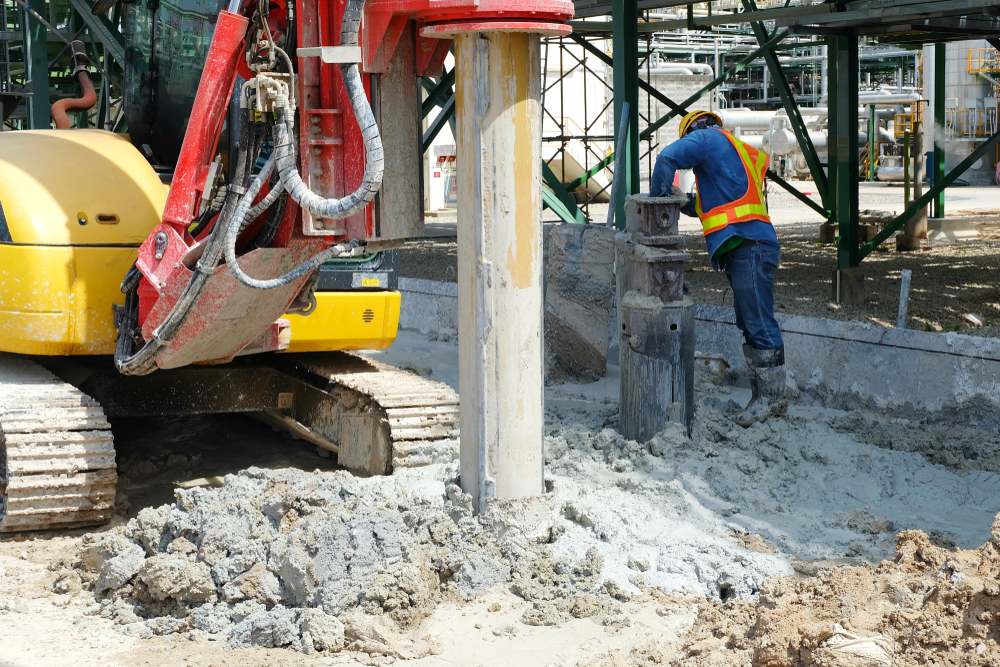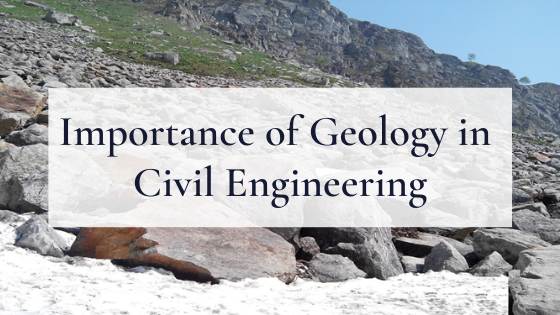Geotechnical Engineering For Construction Projects Things To Know Before You Buy
6 Easy Facts About Geotechnical Engineering For Construction Projects Shown
Table of ContentsThe Ultimate Guide To Geotechnical Engineering For Construction ProjectsAn Unbiased View of Geotechnical Engineering For Construction ProjectsThe 2-Minute Rule for Geotechnical Engineering For Construction ProjectsMore About Geotechnical Engineering For Construction ProjectsThe Main Principles Of Geotechnical Engineering For Construction Projects 8 Easy Facts About Geotechnical Engineering For Construction Projects ExplainedNot known Facts About Geotechnical Engineering For Construction ProjectsSome Ideas on Geotechnical Engineering For Construction Projects You Need To Know
Accompanying this raised complexity comes geological and ecological elements that affect the layout of the structure, which is arguably one of the most integral part of any kind of advancement. People require to trust that structures, bridges, and roadways will stand the examination of time. A Geotechnical engineer advises on exactly how a framework can best be supported providing its distinct situations What's concealed listed below the surface of the ground is most likely one of the most important item of information that a Geotechnical Engineer desires.These examples are after that examined by the laboratory to establish soil structure (Geotechnical Engineering for Construction Projects). The malfunction of sand, silt, clay, and various other materials present in the dirt, assists the designer establish what distinct qualities the website has and what the implications of those might be. Certainly dirt make-up is only one test that can be done on examples
Geotechnical Engineering For Construction Projects Fundamentals Explained
Based upon these tests, there may be more dirt borings that are pierced, or the designer may have adequate details from the initial tests to make a recommendation to the customer on exactly how ideal to wage their job. Results are usually reported via borings logs which show the dirt make-up and features at a selection of midsts.
Geotechnical engineers are responsible for understanding the residential properties of natural deposits and utilizing this expertise to establish safe, cost-efficient styles for building and construction jobs. It is a vital part of any civil design job, as it is used to figure out the suitability of a website for construction and to make certain the framework's security.
This includes doing research laboratory examinations on the samples and utilizing geophysical methods such as seismic refraction and electric resistivity surveys. This data is utilized to assess the website's viability for construction and to figure out the kind of structure that ought to be utilized. Geotechnical engineering examines soil conditions, recognizes prospective risks, selects a suitable structure system for the suggested framework, and determines the very best structure layout for a given project.
What Does Geotechnical Engineering For Construction Projects Do?
The framework might become unpredictable or collapse without correct dirt stabilisation, leading to pricey repair services and prospective injury. The stabilization procedure involves making use of various methods to boost the security of the dirt, such as compaction, grouting, and the enhancement of strengthening materials. Without dirt stablizing, the threats related to building jobs would be a lot greater, and the outcomes much less dependable.
It is a process used to improve the properties of dirts. Geotechnical engineers conduct website investigations to evaluate the dirt's properties and recognize prospective dangers. They likewise design foundations and various other structures that need to be improved the site, taking into consideration the soil's characteristics. They create and carry out soil stablizing methods, such as adding concrete, lime, or various other supporting agents, to enhance the soil's strength and security.
Top Guidelines Of Geotechnical Engineering For Construction Projects
Geotechnical engineers are essential in helping to guarantee that soil stablizing is done correctly to make sure that the structure is safe and protected. Geotechnical design is likewise utilized to assess dirt problems and determine possible hazards. This consists of assessing prospective flooding, landslides, and other natural disasters that can affect the structure.
Geotechnical engineers utilize this expertise to execute site examinations, dirt, and rock screening, and to analyze the outcomes to identify the ideal layout criteria for a job. This info is utilized to make certain that the foundation, retaining wall surfaces, inclines, and various other structures improved or within the subsurface materials have sufficient security and resistance to external lots, such as quakes, wind, and water.
These structures need a deep understanding of the behavior of the subsurface materials, in addition to the capability to handle the influence of excavation and building and construction on the surrounding environment. Geotechnical engineers use their knowledge to identify the suitable style parameters for these structures, such as the shapes and size of the passage, the toughness of the supporting rock, and the kind and amount of support required.
In addition to the style and building and construction of structures, geotechnical engineering additionally plays a crucial function in the rehab and upkeep of existing frameworks. As frameworks age, they may experience degradation or other troubles that influence their security and efficiency. Geotechnical engineers utilize their experience to assess the condition of these structures, determine the root causes of the troubles, and establish techniques to address them.
How Geotechnical Engineering For Construction Projects can Save You Time, Stress, and Money.
In this post, I will certainly talk about the role of geotechnical engineering and the kinds of issues geotechnical designers solve. Geotechnical designers (geotechs) are associated with nearly every sort of civil engineering project. Nevertheless, every framework is supported by soil or rock unless it is floating, flying, or dropping.
Geotechs are normally most involved at Resources the beginning of a task. Geotechnical Engineering for Construction Projects. A few of the tasks that a geotech might be accountable for are checking out subsurface problems, establishing needed laboratory testing of dirt and rock, interpreting the subsurface expedition results, and writing records that record the site conditions and supply recommendations for foundations, fill specs, slope stability, etc
It is not unusual for geotechnical engineers to concentrate on only one of the locations detailed above and research that subject their whole career. Geotechnical design is a vital facet of any kind of civil design job. Despite just how fantastic a framework is constructed, it will not be terrific for long if the foundation is insufficient.
Rumored Buzz on Geotechnical Engineering For Construction Projects

Usually, things that might not appear essential become vital years later when issues develop. One last thing to remember: geotechnical engineering is wed to geology. No matter how great your design know-how is, if something crucial is missed out on in the geologic characterization at a site, your knowledge might not conserve you.
He appreciates creeping around on any kind of landslide he can locate and investing time fly angling on the water. I wish you appreciated this week's post by visitor author Jese Vance. I hope you'll join us.
How Geotechnical Engineering For Construction Projects can Save You Time, Stress, and Money.

It is click over here very important to make the structure to stand up to natural and man-made tons. Loads can be vertical or side. It is necessary to recognize the soil problem prior to creating the type and deepness of foundation required for the structure. In order to understand the subsurface dirt problem, a geotechnical examination is called for.
The Main Principles Of Geotechnical Engineering For Construction Projects
When the examination results come, the Geotechnical Engineer evaluations the report, which lays out the dirt and rock buildings groundwater condition and the linked risks. The kind of structure required to develop the structure is special info after that figured out. Based on the recommendation of the Geotechnical Engineer, the architectural designer then creates the framework.